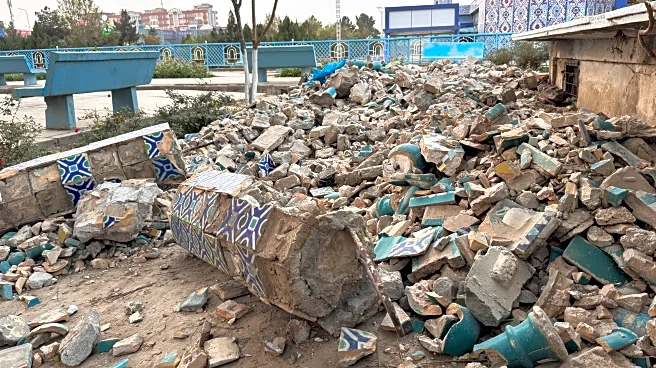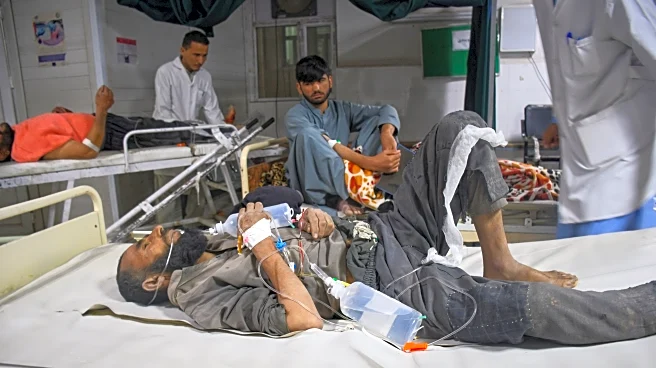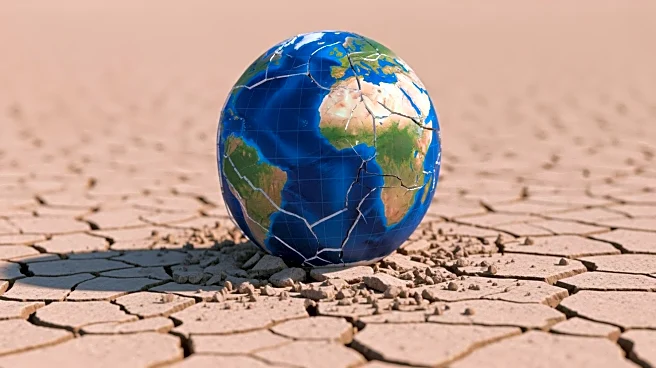What's Happening?
A powerful earthquake with a magnitude of 6.3 struck northern Afghanistan, resulting in the deaths of at least 27 people and injuring nearly 1,000. The epicenter was located 22 kilometers west-southwest
of Khulm in Samangan province. The quake caused significant damage to infrastructure, including the collapse of the laboratory at the Samangan Provincial Hospital, which destroyed critical medical equipment. Historical sites such as the Blue Mosque in Mazar-e-Sharif and the Bagh-e-Jahan Nama Palace in Khulm also suffered damage. Survivors are facing harsh conditions, spending nights in the open due to fear of aftershocks and the destruction of their homes. Emergency response teams are actively working in the affected areas, providing tents and basic necessities to the displaced population.
Why It's Important?
The earthquake has exacerbated the already challenging living conditions in Afghanistan, a country struggling with poverty and limited resources. The destruction of health facilities and historical sites highlights the vulnerability of Afghanistan's infrastructure to natural disasters. The immediate need for shelter and medical assistance is critical, as survivors face cold weather and potential rain. The situation underscores the importance of international aid and support to help rebuild and provide relief to the affected communities. The damage to cultural landmarks also raises concerns about the preservation of Afghanistan's historical heritage.
What's Next?
Rescue operations are expected to continue as authorities work to provide immediate relief to those affected. The focus will likely shift towards rebuilding efforts and restoring damaged infrastructure, including health facilities and historical sites. International aid organizations may play a crucial role in supporting these efforts. The Afghan government and local authorities will need to address the long-term needs of the displaced population, including housing and healthcare. The potential for further aftershocks remains a concern, necessitating ongoing monitoring and preparedness measures.
Beyond the Headlines
The earthquake highlights the broader challenges faced by Afghanistan in terms of disaster preparedness and infrastructure resilience. The country's reliance on poorly constructed buildings makes it particularly susceptible to natural disasters. The damage to cultural sites also raises questions about the preservation of Afghanistan's rich historical and cultural heritage. The international community's response to this disaster could influence future diplomatic and humanitarian relations with Afghanistan.













